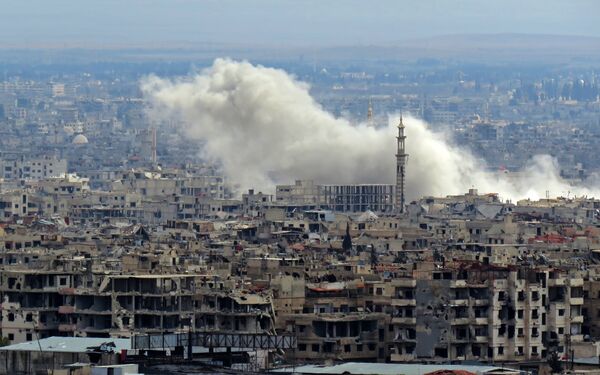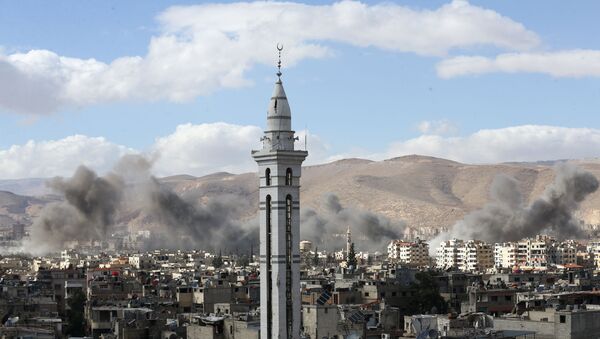Sputnik was the first international news agency to report on the aforementioned protests and rallies, citing photos and video footage published online.
The mainstream media failed or decided not to report on these key developments in Syria’s capital, and several social media users noticed their skewed coverage of developments in East Ghouta.
— Charlotte Smith (@WirralBagpuss) 9 марта 2018 г.
Anti-Militant Protests Erupt in Syria's East Ghouta in Support of Syrian Armyhttps://t.co/s9fUOJMrNG
Users also tweeted directly to the official accounts of a number of media outlets, with the BBC repeatedly singled out.
— Paul Antonopoulos (@oulosP) 6 марта 2018 г.
— PUFFIN (@puffin1952) 9 марта 2018 г.
Others pointed out the mainstream media’s wider biased coverage of the situation in East Ghouta, and outlined how the recent anti-militant protests don’t fit their narrative and portrayal of developments in Syria.
— Sarah Abdallah (@sahouraxo) 10 марта 2018 г.
— Mohsen Shebli (@_mohsenshebli) 9 марта 2018 г.
— Jay Nelson (@StoneSculptorJN) 10 марта 2018 г.
The Syrian Army and other allied ground forces launched operation Damascus Steel around two weeks ago to dislodge hardline Islamist militants from the east Ghouta pocket.
Over 50 percent of the pocket has been liberated as of March, 11, with spearheading forces – the fourth armored division and Republican Guard – continuing to advance against terrorists, and are close to dividing East Ghouta into three pockets.

Militants have used East Ghouta as a launchpad to fire mortars and improvised rockets at government-held parts of Damascus city, targeting cafes, schools, residential areas, and government buildings.
In conjunction with Russia, Syrian authorities opened several humanitarian corridors to allow civilians to leave East Ghouta. However, militants have attacked these corridors, preventing most civilians from fleeing to safety.





